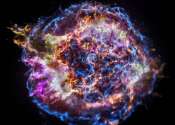Review on the origin of Type Ia supernovae
Dr. Shing Chi Leung, SUNY Poly assistant professor of physics, has published a review article as the leading author on the origin of Type Ia supernovae. The article is co-authored with Dr. Ken'ichi Nomoto, Professor Emeritus ...









